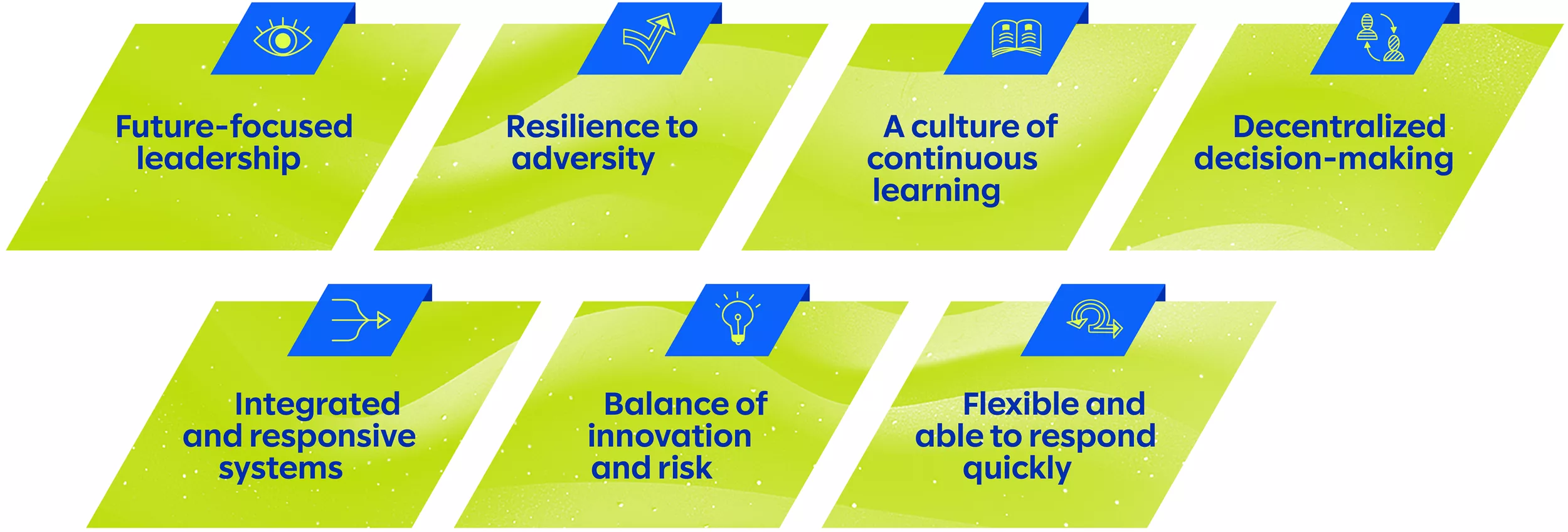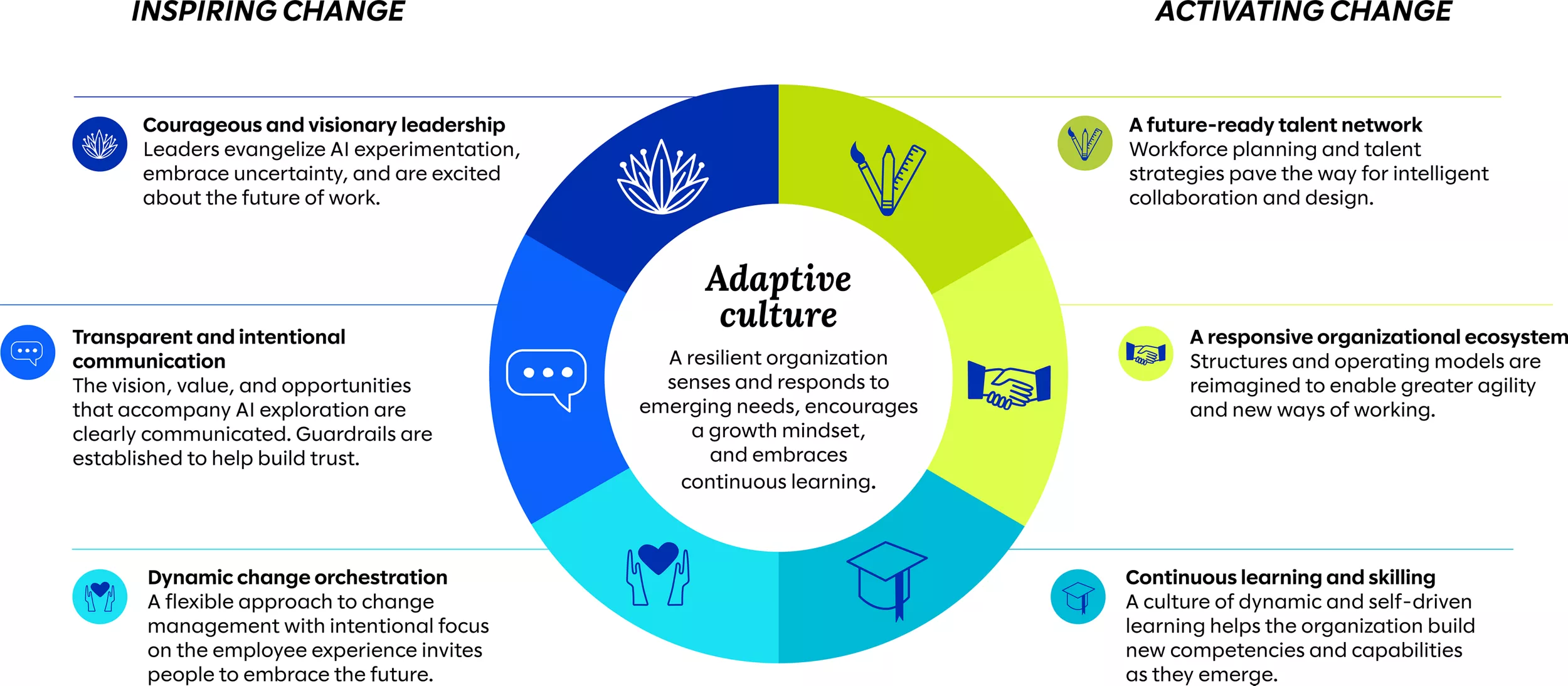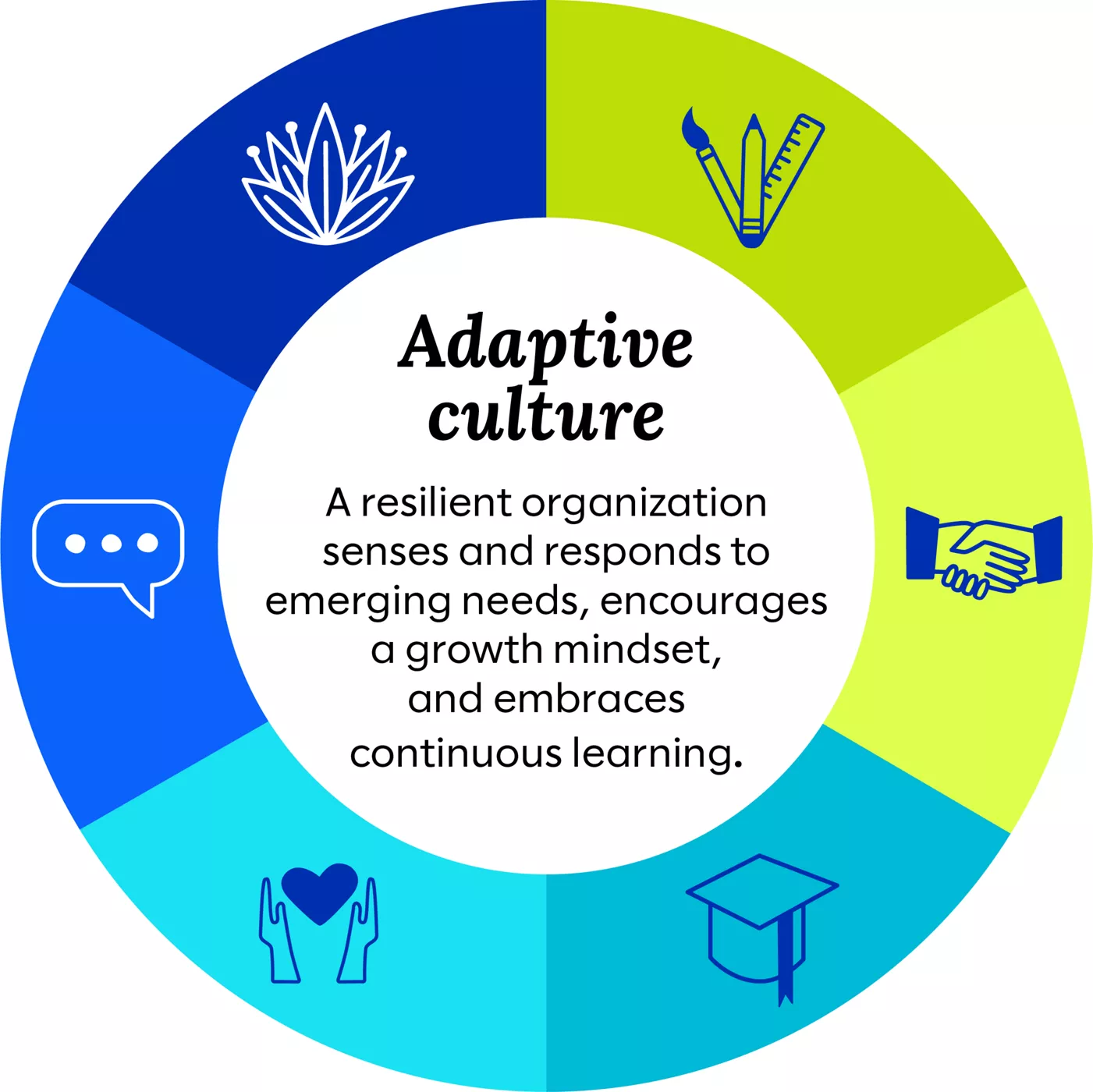Ready for the future: Building an adaptive organization

AI as a catalyst for ongoing change is real. It has created a ripple effect across the workplace, influencing everything from employee skills and career planning to talent shortages.
According to our 2024 research report, 38% of executives have begun redesigning roles to better integrate AI into their operations. This demonstrates how some leaders are starting to adapt to AI and anticipate ongoing shifts.
“When it comes to the future of work, the only expectation we should have is continuous change,” says Ali Minnick, general manager of Business Advisory Services at Slalom. “Leaders need to move away from solely considering how their organization should be using AI and instead focus on uncovering the next big change AI will facilitate.”
An adaptive foundation
“Adaptive” refers to the ability to change or evolve over time in response to changing circumstances. It’s the difference between adapting to change coming your way and consistently responding to continuous change.
With advanced AI models already in development, it’s nearly impossible to predict the speed and impact of changes to come. The result is a series of continuous transitions for leaders to decide how, when, and where to best use technology.
This exponential transition means that what has worked for your organization in the past isn’t what will pave the way for future success. Instead, you must build an adaptive organization that can succeed in a future of dramatic and continuous change.
In the rest of this article, we’ll introduce the adaptive organization and help you identify steps to enable your organization’s ongoing evolution and success.
Key characteristics of adaptive organizations

There are seven characteristics that distinguish adaptive organizations from their more traditional, rigid counterparts:
- Future-focused leadership: Leaders are forward-thinking, develop adaptive strategies, consistently leverage insights, and are open to changing course based on new information. They make decisions quickly to seize opportunities and mitigate risks.
- Resilience to adversity: Amid continuous change and challenging circumstances, adaptive organizations maintain their core purpose and integrity.
- A culture of continuous learning: In environments where learning and skill development are prioritized, employees take ownership of their development and better adapt to new roles and technologies as they emerge.
- Decentralized decision-making: These organizations empower their teams to make decisions that foster agility and faster response times.
- Integrated and responsive systems: Adaptive organizations develop systems and structures that can easily be reconfigured in response to changes in the environment. They actively use insights to generate, test, and refine new initiatives and operating models.
- Balance of innovation and risk: These organizations implement bold ideas both sustainably and effectively by maintaining a careful balance between innovation and risk management.
- Flexible and able to respond quickly: Adaptive organizations anticipate changes in their markets. They leverage data and insights to embrace new opportunities.
Shifting to a new mental model
The evolution to become an adaptive organization demands a dramatic shift in ways of thinking. In practice, that shift translates to profound changes in leadership, communication, change management, talent development, organizational structure, and learning approaches. These shifts include:


Adaptive culture
From: organizational cultures focused on established protocols and set structures that have allowed them to perform. In a “that is not how we do it here” culture, innovation and responsiveness are out of reach.
To: a resilient organization that keenly senses and swiftly responds to emerging needs. It fosters a growth mindset, champions continuous learning, and embraces iterative approaches. By prioritizing design of the future over past successes, organizations are empowered to pivot quickly in response to both external changes and internal insights. This can be measured and planned with Slalom’s adaptability quotient, or “SHIFT AQ.”
Courageous and visionary leadership
From: senior experts who carefully architect the future, leading change from the top down with high controls for managing work. This hierarchical approach often results in rigid structures that can be slow to adapt to new challenges.
To: leaders articulate a clear vision for the future, champion experimentation, and embrace uncertainty. They model behaviors that foster innovation and adaptability. They coach more than control, and they empower their teams to explore and experiment as the means to continuously adapt and disrupt. Leaders can start by utilizing Slalom’s Adaptive Strategy Framework to help chart the course for the future. With an insights-first approach, they’re able to act swiftly when the market changes.
Transparent and intentional communication
From: formal communication driven from the top, planned and cascaded to employees. While thoughtful, this approach can lead to misalignment “on the ground” and slow dissemination of crucial updates.
To: dynamic methods for continuous sharing and increased candor about the opportunities and the expectations of the workforce. Messages set clear expectations, encourage learning and curiosity, and provide guardrails for direction around emerging technology and business risks. By encouraging open and frequent communication and setting a tone that welcomes change, the organization can quickly respond to emerging issues and shift its focus to meet new demands.
Dynamic change orchestration
From: change management focused on designing plans to increase adoption of disruptive technologies and reduce resistance to organizational changes. Plans can be rigid, driven from the top, and are slow to implement.
To: accelerated change methods that quickly adapt to new technologies and operating models. With a more flexible approach to change orchestration, responsive plans are augmented by social network analysis to identify where knowledge and influence can most effectively drive change efforts. Feedback mechanisms deliver real-time adjustments for evolving circumstances. The focus is on the employee journey.
A future-ready talent network
From: traditional workforce planning built with robust, annualized strategies to optimize the mix of talent, strategic partners, and contingent workers that builds the organization and fills needed roles. However, this often leads to a static view of job functions.
To: a more dynamic review of the extended workforce ecosystem and a continuous evaluation of options for “intelligent collaboration” between humans and machines. With an increased focus on tasks and skills—as well as the emergence of brand-new job categories—the organization stays agile and can leverage the best available talent to optimize performance.
A responsive organizational ecosystem
From: organizational structures and systems that are realigned as part of a large-scale transformation initiative, a new business model innovation, or new leadership direction. It’s typically a slow yet thorough process.
To: an organization that reimagines its structures and operating models to enable faster responses to different scenarios, including how AI influences ways of working. Combined with more flexible processes, this revamped organizational design allows for experimentation and adjustments as teams learn. A greater focus on agility, regular review of AI impacts on the organization’s operating model, and willingness to adjust based on learnings open the door for greater innovation and responsiveness.
Continuous learning and skilling
From: annual development planning and enterprise-driven learning that often results in a lag between emerging skill needs and the availability of people trained with those new skills.
To: a culture of dynamic and self-driven learning throughout the entire organization, with opportunities for employees to develop new skills and adapt to evolving roles. This includes both enterprise-driven learning and self-driven skill development, where employees are encouraged to build new skills as they emerge. Lean learning and learning coaches, such as AI coaches, help employees quickly develop and apply new skills as technology changes.
A new path forward
To truly become adaptive, leaders must embrace change and uncertainty across multiple dimensions. Leaders are the critical players in forging a new kind of transformation, setting examples, and creating a culture of continuous learning and open communication.
At Slalom, we help leaders adapt their organizations to an uncertain future and empower their people in the face of change. We know that being adaptive isn’t just about new AI tools or redesigning workflows; it’s about building a mindset that handles uncertainty and navigates complexity.
By focusing on building this adaptive muscle and being flexible in navigating the change journey, organizations can keep pace with technology and market demands to better meet their customers’ evolving needs. This shift makes organizations more resilient, innovative, and able to achieve long-term success in a constantly changing world.








